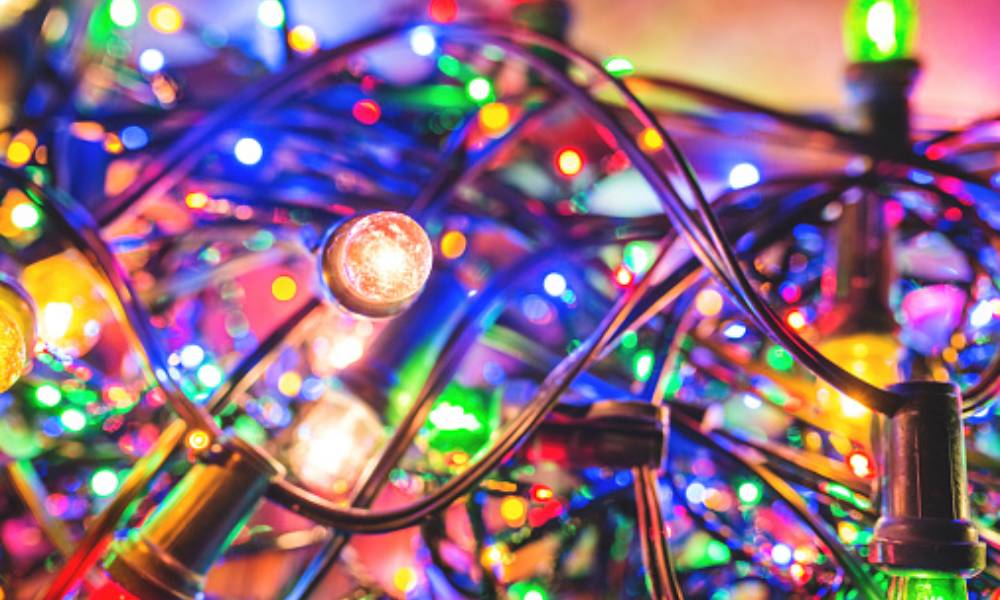Ever asked yourself, “How many strings of LED lights can be together without problems?” I remember hanging lights one winter and tripping the breaker—lesson learned! The good news is, it’s simple once you know how many strands of lights you can connect and why LED bulbs use less power. In this guide, I’ll share easy tips, a wiring diagram for LED strip lights, and my own tricks to keep everything bright and safe. Stay with me—I’ll help you light up your space without stress.
The Basics of Connecting LED Light Strings
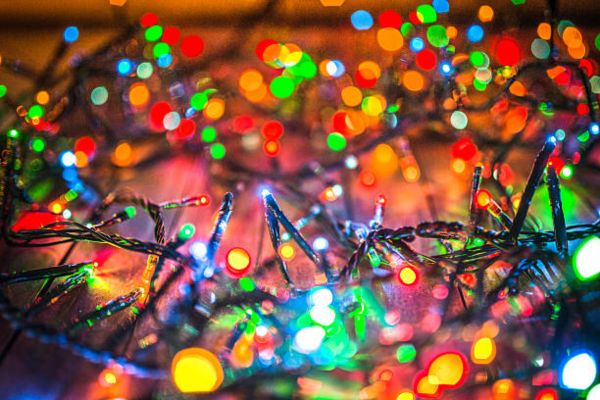
If you live in the U.S., most outlets run at 120 volts, while many other countries use 220 volts. That means the number of light strings you can safely connect depends on the local voltage and the rating of your lights. In simple terms: the higher the voltage, the fewer amps you draw for the same power.
Most brands list how many strands you can connect right on the box. For old incandescent sets, it’s usually 3–5 strings max. But with modern LED sets, you can often plug in 20 to 40 strings together without trouble. I remember being amazed when I swapped my old Christmas lights for LEDs—I went from tripping breakers to running my whole porch display on one outlet.
Here’s why LEDs are such a game changer. They use up to 80% less energy than incandescent bulbs, run cooler, and last longer. That means safer setups, lower bills, and fewer headaches. Think of it like trading a gas-guzzling car for a hybrid—you go farther on less fuel.
How Many Strands of Lights Can You Connect Safely?
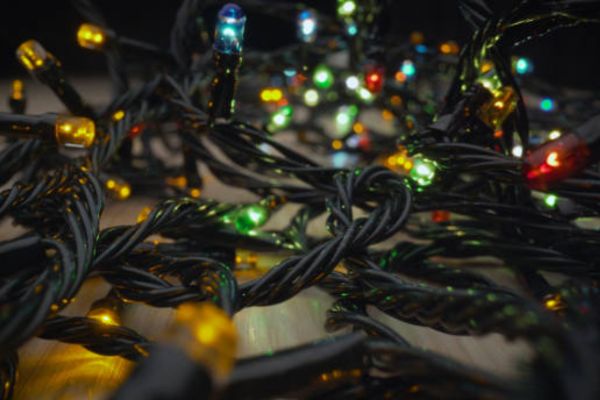
The safe number of light strands always comes down to wattage, amperage, and the UL rating on the box. Every string of lights uses a set amount of power, and that power adds up fast when you connect them end to end.
Here’s the simple math: take the total watts of your lights and divide by the voltage (120V in the U.S.). That gives you the amps. For example, if one string uses 40 watts and you connect 10 strings, that’s 400 watts. Divide 400 by 120 and you get about 3.3 amps.
Now compare that number to what your outlet can handle. A standard 15-amp household circuit should only be loaded to 80% for safety, which is about 12 amps max. If your total amps are under that, you’re safe.
I learned this the hard way one Christmas when I overloaded a circuit with old incandescent lights. The breaker tripped in the middle of dinner, and half the house went dark. Since switching to LEDs and doing the quick math, I’ve never had that problem again.
LED Strip Lights vs. String Lights – Key Differences
LED strip lights and string lights look similar, but they work in different ways. String lights are the classic style, with bulbs spread along a cord. They are easy to hang on trees, fences, or around a porch. Strip lights are flat, flexible bands with tiny LEDs. They often have sticky backs so you can place them on walls, cabinets, or under shelves.
The glow is also different. String lights give a soft, dotted shine that feels warm and cozy. Strip lights are brighter and can change colors or dim with a remote. For size, string lights usually come in 20–50 foot sets. Strip lights are sold in long rolls that can be cut or joined to fit your space.
Connection is another key point. String lights plug end to end with no tools. Strip lights need a power supply and connectors. If you look at a led strip light circuit diagram, you’ll see how strips link in series or parallel with the right adapter.
Wiring Diagram for LED Strip Lights (Simple Guide)
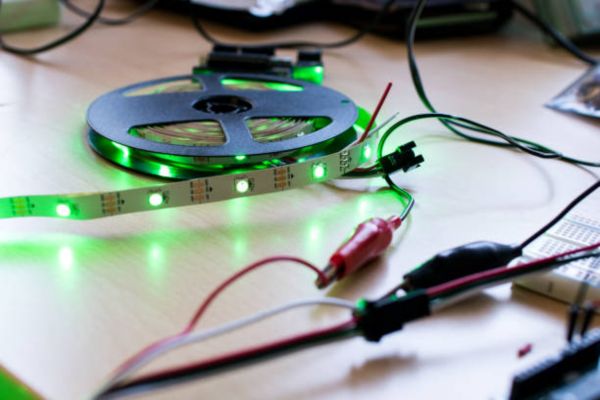
At first, a wiring setup for LED strips may look confusing, but it’s easier than you think. Each strip needs a power supply, and that supply must match the strip’s voltage, usually 12V or 24V.
Picture the layout like this: the power supply connects to a connector, and that connector links to the strip. If you want more length, you can add another strip. In a wiring diagram for LED strip lights, you’ll see arrows showing how current flows in one direction.
There are two ways to set up strips—series and parallel. In series, one strip connects to the next, but the voltage stays the same. In parallel, each strip connects back to the same power source, which is safer for longer runs.
Always match the power adapter to the strip’s voltage and wattage. Using the wrong adapter can cause dim lights, overheating, or even damage. I once used a lower-rated adapter, and the strip barely lit up. Lesson learned.
Practical Tips for Safe Connections
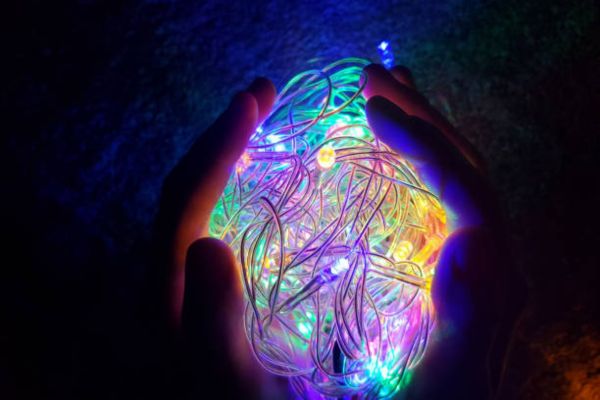
The best way to stay safe is to follow the manufacturer’s max-connect instructions. Every box lists the safe number of strands. Going over that limit can trip breakers or damage the lights.
If you’re setting up outdoors, make sure to use outdoor-rated cords and lights. Indoor cords can’t handle rain, snow, or cold weather. I learned this during a backyard party when a non-rated cord shorted out in damp grass.
Another tip is to avoid daisy-chaining across multiple outlets. Plugging strands into different outlets on the same circuit can still overload the breaker. It may look balanced, but the circuit is what matters.
Common Mistakes to Avoid
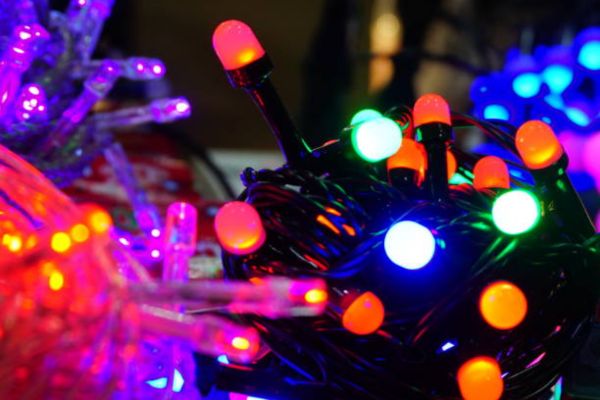
One big mistake is mixing incandescent and LED lights on the same chain. Incandescents draw a lot more power, and adding LEDs won’t make the load safer. In fact, it can throw off the balance and overload your circuit.
Another common error is ignoring the rating on your extension cords. Not all cords are built to handle heavy loads. A low-rated cord with too many lights can overheat or even melt. hts.
It’s also risky to plug too many lights into one circuit. Even if you use multiple outlets, they may share the same breaker. I’ve tripped mine more than once before learning how to calculate the load.
FAQs
What happens if you connect too many light strings?
Too many strings can overload the circuit, trip your breaker, or cause your lights to flicker or shut off. Stick to the safe limit.
Can LED strip lights be connected end to end?
Yes, many LED strip lights can connect end to end, but only up to a certain length. After that, you’ll need a separate power supply to keep brightness even.
Do I need a special adapter or connector for LED strips?
Yes. LED strips need a power adapter that matches the voltage (usually 12V or 24V) and may require connectors for longer runs or corners.
How do I know if I overloaded a circuit?
If your breaker trips, lights flicker, or cords feel warm, you’ve likely overloaded the circuit. Do the math: stay under 80% of the circuit’s amp rating.
Conclusion
Figuring out how many strings of LED lights can be together might sound tricky at first, but it’s really just about knowing your wattage and checking the limits on the box. Once you’ve got that down, everything else falls into place.
Personally, switching to LED lights and using these tips saved me a lot of stress. No more tripped breakers, no tangled mess, and no surprise power bills after the holidays. Just smooth, glowing lights—and a lot more peace of mind.

